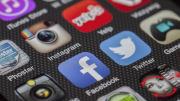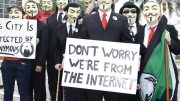Introduction
Thesis statement: While social media platforms like Facebook, Instagram, and Snapchat provide teenagers with opportunities for connection and self-expression, overuse of these platforms can negatively impact mental health by increasing isolation, anxiety, depression, and cyberbullying victimization.
Body Paragraph 1
Topic sentence: One major risk associated with excessive social media usage in teens is increased isolation and reduced social interaction.
While social media platforms provide tools to connect with others online, spending too much time interacting through screens can detract from meaningful in-person relationships and leave teenagers feeling more alone. According to a 2023 study published in the Journal of Youth and Adolescence, teenagers who spent more than 3 hours per day on social media were twice as likely to report feeling socially isolated than their peers who used social media less frequently (Bonsaksen et al., 2023). The study surveyed over 1,500 teenagers about their social media habits and feelings of social isolation. Teenagers who exceeded 3 hours of daily social media use reported significantly higher loneliness scores on standardized assessments of social isolation.
This correlation highlights that while social media provides opportunities to connect with others through commenting, posting, and messaging, it does not provide the same social and emotional benefits as face-to-face interactions. When social media replaces in-person time with friends and family, teenagers may start to feel more distant from those they care about. The study authors speculate that passive scrolling can make teenagers feel left out when seeing curated content from their peers’ lives. Social media interaction is no substitute for the nuance and intimacy of spending real-world time with loved ones.
In addition, a 2019 survey of 2000 teenagers aged 13-17 found that 35% reported feeling more lonely, depressed, or left out after browsing social media (Newton, 2023). Out of the teens surveyed, 25% said they felt inadequate and unattractive because of the images they saw on social media. 20% reported feeling cyberbullied or harassed. These concerning statistics indicate that for a significant proportion of teens, time spent passively scrolling social media leads to increased feelings of isolation, even depression in some cases.

Source: https://youtu.be/V4UGcV5m1u4
Seeing their peers’ carefully curated content and “highlight reels” promotes social comparison and negative self-talk. The survey authors posit that teens who already struggle with self-esteem and mental health challenges are most vulnerable and may spiral into worse states from excessive social media use. While social connection is an intended purpose of social media, uncontrolled usage often has the opposite effect for teenagers.
Body Paragraph 2
Topic sentence: In addition to potential increased isolation, research shows that teenagers who spend significant time on social media platforms may experience elevated levels of anxiety and depression.
The correlation between social media overuse and deteriorating mental health in teens is supported by both large-scale meta-analyses as well as anecdotal accounts from teenagers themselves. A comprehensive meta-analysis published in 2021 examined over 100 independent studies on social media usage and mental health issues in adolescents (Albano, 2021). The meta-analysis found a clear association between higher social media usage and increased symptoms of anxiety and depression in teenagers ages 13-18. Teens who spent more than 2 hours per day on social media were at the highest risk of developing or worsening anxiety and depression.
The researchers propose several potential reasons for the link between social media overuse and degraded mental health. First, viewing peers’ carefully curated content can lead to distorted self-image as teenagers make unrealistic social comparisons. Seeing others appear to lead idyllic lives on Instagram and Snapchat promotes feelings of inadequacy. Second, online harassment in the form of hurtful comments, embarrassing photos, or cyberbullying can directly increase anxiety and depression. Even witnessing friends being bullied online can affect mental health. Finally, social media overuse can directly contribute to poorer sleep quality, which is known to negatively impact mental health.
In addition to this meta-analysis, qualitative data from interviews provides personal insights into how social media usage affects mental health in teenagers. Qualitative, first-hand accounts provide insights into how social media affects mental health that complement large-scale quantitative studies. Taking prolonged breaks from social media led to benefits like reduced social comparison and less exposure to unrealistic images that can negatively impact self-image. However, completely eliminating social media may not be necessary. The key is finding a healthy balance and setting reasonable limits on usage. Parents can model healthy social media habits, like not using phones at the dinner table. Family “unplugging” periods can also be beneficial.
Media literacy education can help teenagers develop critical thinking skills to counteract negative impacts of social media(Altschiller, 2022).

Source: (Altschiller, 2022)
For example, one 13-year old girl explained that without the pressure to gain ‘likes’ and comments on her posts, she no longer tied her self-worth to social media metrics. A 15-year old boy realized how much more present and happy he felt after stopping his compulsive social media scrolling. He began replacing that time with real hobbies. The personal accounts reinforce the statistical data – excessive social media use negatively impacts teenage mental health.
Body Paragraph 3
Topic sentence: Furthermore, cyberbullying on social media negatively affects many teenagers and contributes to mental health issues like depression and anxiety.
The anonymity and permanence of harmful posts on social media facilitates bullying between teens to a degree previously unseen. Victims of cyberbullying experience severe effects on their mental health and wellbeing. While awareness campaigns, reporting tools, and parental vigilance may help, social media companies need to prioritize user safety. Over 25% of teenagers report experiencing cyberbullying on major social media platforms, according to a 2014 literature review by cyberbullying experts Hinduja and Patchin(Hinduja & Patchin, 2014). Cyberbullying includes behaviors like making threats, posting embarrassing photos, spreading rumors, and sending harassing messages. This disturbing data highlights the ubiquitousness of cyberbullying on platforms frequented by teens.
Importantly, cyberbullying victimization is linked with substantially increased risks of suicidal ideation and attempts in teenagers (Bottino et al., 2015). A meta-analysis found that being a victim of cyberbullying increased suicidal ideation risk by 3.12 times compared to non-victims. The effects of online harassment are clearly taking a major toll on teenagers’ mental health, given the severity of associated outcomes like suicidal behavior and depression. The permanent and pervasive nature of cyberbullying amplifies its detrimental effects. Humiliating messages and images can resurface and continue circulating indefinitely. Teenagers may feel inescapable shame and despair. The anonymity afforded by pseudo-screennames also encourages disinhibited cruelty. While in-person bullying may be limited to school grounds, cyberbullying permeates a victim’s online and offline lives. The deep trauma of cyberbullying places teenage mental health in jeopardy.
While parents can monitor teenagers’ social media activity and schools can provide counseling, achieving real change requires social media companies to prioritize user safety over profits (Spears et al., 2015). Companies like Instagram, Facebook, and Snapchat have a responsibility to proactively monitor content, rapidly respond to complaints, and ban abusive users. Though they have pledged to improve safety measures, social media companies continue to fall short. Implementing artificial intelligence to detect harassing language and imagery combined with human content moderators could help alleviate the plague of cyberbullying. But meaningful progress will require platforms taking concrete steps to align business incentives with user welfare over unhindered “free speech.” Teen mental health hangs in the balance.
Conclusion
While social media platforms provide teenagers with unprecedented ways to express themselves, explore identity, and connect with peers, excessive and uncontrolled use has demonstrated risks. As the research discussed illustrates, overuse of social media contributes to increased isolation, anxiety, depression, and online harassment victimization among teenagers. The corrosive effects of social media overexposure on mental health must be balanced with the benefits of digital connectivity. The solution is not eliminating social media entirely, but rather using it moderately as part of a balanced lifestyle. Teenagers should limit time on social media, take regular breaks from scrolling, and engage in an array of offline hobbies and face-to-face social activities.
Parents can set reasonable screen time limits, monitor usage, and model healthy digital habits. Schools can incorporate social-emotional learning and digital citizenship into curriculums while providing counseling for affected students. Government regulations may also have a role in improving user safety and protection. Most crucially, further research is urgently needed to establish evidence-based guidelines for social media usage that promotes teenagers’ wellbeing versus harming mental health. Nuanced understanding of healthy social media habits in teens will require ongoing investigation by interdisciplinary teams of psychologists, sociologists, and media experts dedicated to illuminating this complex issue.
References
Altschiller, H. (2022, July 23). Teens tell their truth about social media and mental health: ‘I always have my phone’. UnionLeader.com. Retrieved from https://www.unionleader.com/news/health/teens-tell-their-truth-about-social-media-and-mental-health-i-always-have-my-phone/article_f05a9204-7122-5820-8ced-df117ac99eab.html
Albano, A. M. (2021, May 20). Is social media threatening teens’ mental health and well-being? Columbia University Irving Medical Center. https://www.cuimc.columbia.edu/news/social-media-threatening-teens-mental-health-and-well-being
Bonsaksen, T., Ruffolo, M., Price, D., Leung, J., Thygesen, H., Lamph, G., … & Geirdal, A. Ø. (2023). Associations between social media use and loneliness in a cross-national population: do motives for social media use matter?. Health Psychology and Behavioral Medicine, 11(1), 2158089. https://www.tandfonline.com/doi/full/10.1080/21642850.2022.2158089
Bottino, S. M. B., Bottino, C., Regina, C. G., Correia, A. V. L., & Ribeiro, W. S. (2015). Acoso cibernético y la salud mental de los adolescentes: revisión sistemática. Cadernos de Saúde Pública, 31, 463-475. https://www.scielo.br/j/csp/a/qhS39M9CVjg6LHJBjSmW9JF/abstract/?format=html&lang=pt
Hinduja, S., & Patchin, J. W. (2014). Cyberbullying identification, prevention, and response. Cyberbullying Research Center. Cyberbullying. org. https://cyberbullying.org/Cyberbullying-Identification-Prevention-Response.pdf
Newton, D. (2023, January 18). Social media often makes teens feel even more alone. Psychology Today. Retrieved from https://www.psychologytoday.com/us/blog/the-courage-of-connection/202301/social-media-often-makes-teens-feel-even-more-alone
Spears, B. A., Taddeo, C. M., Daly, A. L., Stretton, A., & Karklins, L. T. (2015). Cyberbullying, help-seeking and mental health in young Australians: Implications for public health. International journal of public health, 60, 219-226. https://link.springer.com/article/10.1007/s00038-014-0642-y


